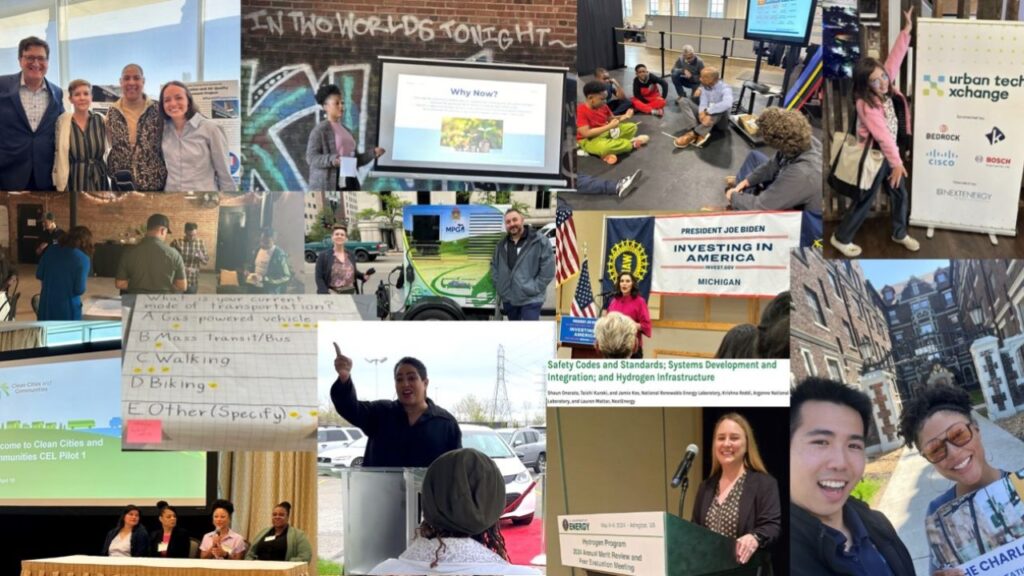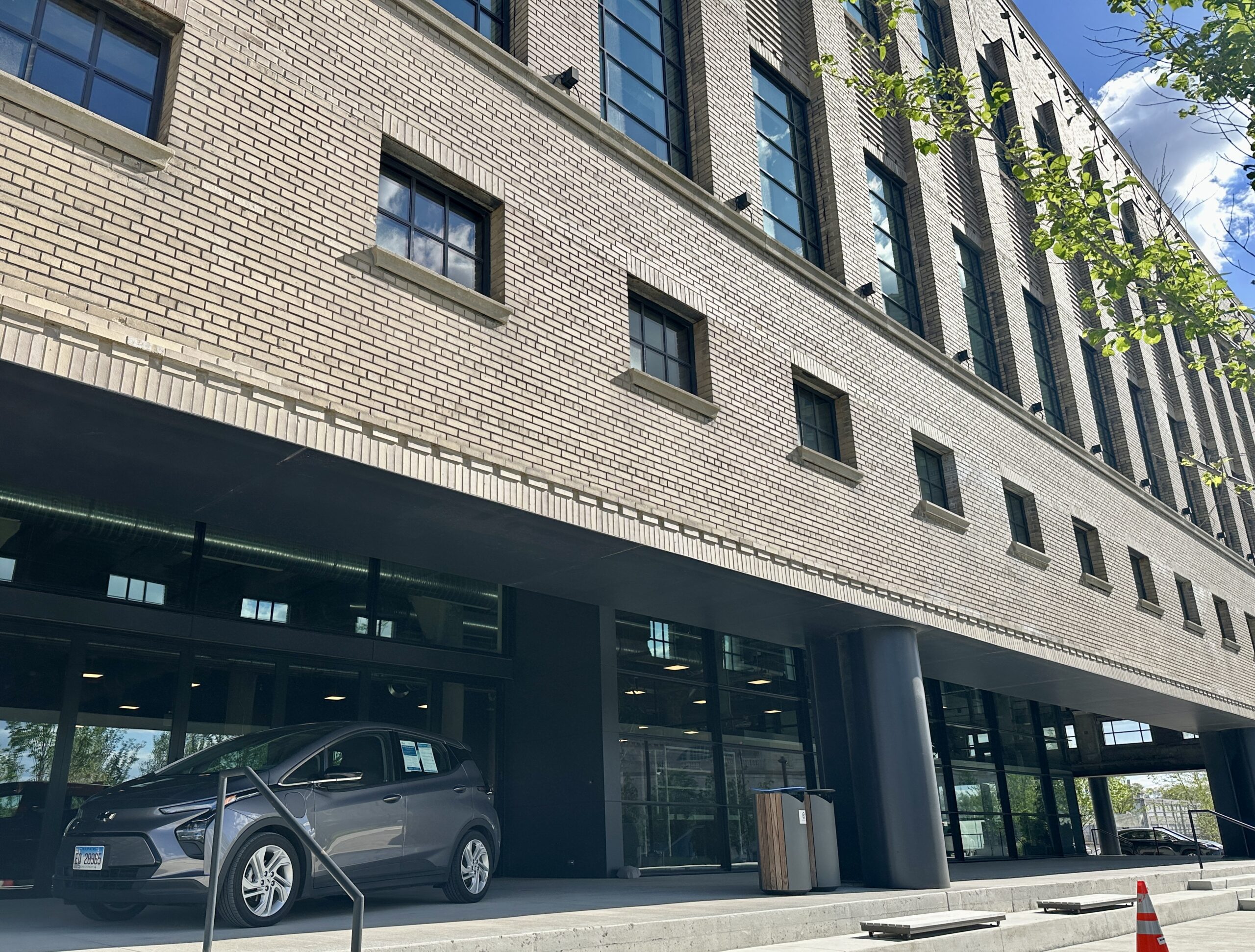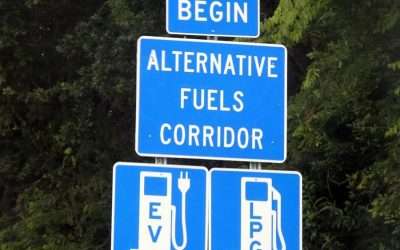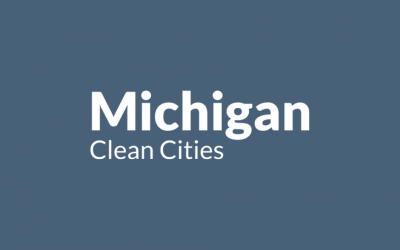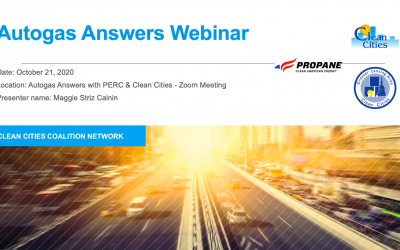Transportation isn’t a one-size-fits-all industry. Across different means of transportation and different communities in Michigan, the movement of people and goods through our state looks different everywhere you go. That’s why Michigan Clean Cities works with communities around the entire state to find transportation solutions specific to their needs and goals. From Detroit to Marquette, we’ve worked to cover this entire state – and are still growing.
Detroit – Personal Mobility
In Detroit, like other urban places, people want transit – owning a car or truck just isn’t what a lot of people need. This is something we’ve heard at each of our listening sessions held in partnership with the Detroit Local Initiative Support Corporation (LISC Detroit) and the U.S. DOE Clean Cities & Communities Energy & Environmental Justice Initiative.
Although most of our clients and partners – our stakeholders – are fleet operators (including transit agencies) or fuel providers, hearing from the public is important to us to center our goals and our work in community. This spring, we’ve hosted transportation open houses with LISC Detroit-affiliated housing communities to hear firsthand how residents get around town. These events focused on two main questions: how do you get around now, and how would you like to be able to get around?
We heard that most people use a vehicle that they own, with most of them being cars and some people using bikes. Many of the car owners lamented the high costs of personal car ownership, such as gas, maintenance, and insurance, yet didn’t feel they could rely on the transit system as a reliable alternative. The prevailing sentiment we heard in these sessions was that community members wanted transit options that were reliable and suited their needs. One solution we heard a lot of enthusiasm about was a shuttle system – a smaller bus that could serve locations that are just “too close to drive, but too far to walk” that could also connect with amenities like bike-share, car-share, and transit Our stakeholder Parker Village, in Highland Park, is working to get a similar concept running in their neighborhood, and hopefully demonstrate the concept for others to follow.
While these neighborhood-level transit services would be great for people in Detroit, they may not be as in demand in suburban, ex-urban, or rural communities. Understanding these differences helps us tailor our work to the needs of every community that we work in. As we gain input from communities, MICC links with other groups focused on specific types of mobility, sharing our expertise related to alternative fuels and advanced vehicles, to help make ideas reality.
Lansing and Traverse City – Public EV Charging
In both Lansing and Traverse City, we have worked to help plan investments in publicly accessible EV charging. While many cities are planning to make these investments as part of their future transportation and energy systems, each community has different needs and priorities. Demographics and travel patterns are important factors to consider when incorporating electric vehicle charging stations.
Multiple highways pass through Lansing, where chargers are already being built along these corridors. In order to complement where private investment is doing these installations, how should the city design its charging infrastructure for its residents? What locations make sense to enable an EV transition for all? There is ongoing community engagement to answer this question. Often, it’s where people live, work, and visit. Locating level 2 EV chargers at community centers and workplaces gives people the opportunity to fuel their EV close to home and without taking time out of their day to find a charger – akin to trip chaining while running errands – charging where you have “dwell” time works into your plans for the day. Public EV charging “hubs” that also can support commercial vehicles and transit buses is a concept that is being considered to meet a number of use cases in one site. By centering resident and business needs in its project planning, the City of Lansing can effectively use its funds to bring EV charging to its neighborhoods and provide accessible options for its residents.
Summer is starting, which means Traverse City is going to get a whole lot busier. Although there are already public chargers that get used year-round, if EV sales continue their increase, how many more chargers should there be to handle more traffic, and where? Two of Traverse City’s existing public chargers are part of the answer – one at the local library, and another at the marina. Opinion is mixed on how much time ought to be spent inside the library on summer vacation, but usage data for each of these charger locations can help tell the story. Community centers like the library are supporting Traverse City residents who own EVs (and locals can pick up their next beach read, then head to Clinch Park to charge up). Other locations, such as at Clinch Park near the marina and local hotels, support EV drivers visiting the city. By working with tourist destinations in the area to incentivize the inclusion of EV charging stations in their parking lots, the city can effectively invest in public charging for its residents, and expand charging for its visitors. Public EV chargers like these also make it much easier for ride hailing service drivers (think Lyft and Uber) to choose a zero-emission EV by making “fueling” convenient. Once again, understanding how a city can support EV drivers visiting or living in an area is key to making good public charging investments.
Marquette – Cold Weather EV Fleets
It’s one of the constant questions about EVs – “How do they do in the cold?”
Fortunately, one of the coldest places in Michigan is helping test that out. Through NextEnergy’s MI NextCities initiative (in partnership with the State’s EGLE department), MICC is working with the City of Marquette to introduce and demonstrate EVs in their fleet. So far, two eTransit vans and an electric lawnmower have been put into service. The vans are helping us measure exactly how cold temperatures affect the battery of an EV. Having put those vans into service as the weather turned cold in 2023, soon enough we’ll have one winter’s worth of data to put an exact answer to this question.
Most importantly, we hear qualitatively from the fleet managers in Marquette about their experience with these new vehicles. Incorporating electric vehicles into a municipal fleet requires rethinking fueling and use of the vehicle, from near-instant refueling to overnight charging. Used effectively, like what’s being done in Marquette, these vehicles and chargers can simplify a fleet’s operations and save them money on fueling costs, as long as the new vehicle can get the job done. So far, we’re seeing the electric vans in Marquette prove up to the task.
Check out our Spring 2024 photo collage
